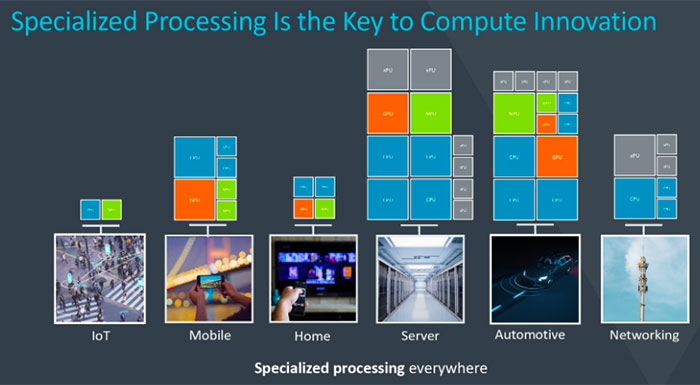Arm has announced the Armv9 instruction set architecture (ISA), its first new architecture in over a decade. The chip designer seems confident that Armv9 is going to be a success, and it is going to be everywhere – in 300 billion new Arm chips in the coming years, it predicts. Part of that confidence comes from careful planning to make sure Armv9 addresses a particular trio of important areas, with significant advances - security, performance, and AI.

The management at Arm see security as the greatest challenge for the industry. It reminds us that a single vulnerability could compromise entire networks and hacking activity is at an all-time high with Symantec's IoT honeypots detecting 19 million attack attempts in just one quarter of 2020. Thus, delivering confidential computing is an industry, and an Arm, priority.
Armv9 introduces the Arm Confidential Compute Architecture (CCA). It explains, in brief, that confidential computing "shields portions of code and data from access or modification while in-use, even from privileged software, by performing computation in a hardware-based secure environment". Moreover, Arm CCA introduces the concept of Realms. Any Arm app will be able to leverage Realms to keep its code and data private from other software tasks. Arm worked closely with Microsoft in developing CCA.

Arm seems to be quite proud of how processors based upon its designs have made greater performance steps than the industry average over recent years. It asserts that this momentum will continue moving into the first Armv9 CPUs, which are expected to arrive with "performance increases of more than 30 per cent over the next two generations of mobile and infrastructure CPUs." Total Compute design principles are going to be applied across the entire Arm IP portfolio of automotive, client, infrastructure and IoT solutions in Armv9 designs.
A specific computing architecture improvement mentioned by Arm is in the development of Scalable Vector Extensions (SVE) technology with the help of Fujitsu. The new SVE2 tech will work with vectors that are up to 2,048 bits in length (up from 128 bit limit of SVE), to enable "an enormous amount of parallel compute". SVE was originally designed for HPC and is used in the Arm-based Fujitsu A64FX chip now powering the world’s fastest supercomputer, Fugaku. However, SVE2 targets a more diverse array of compute niches like DSP and XR workloads.

SVE2 also has a role to play in various new approaches to deploying more powerful AI. Arm foresees many use cases for Arm processors with AI and ML processing acceleration and says this tech will get a further boost in coming years via upgrades to Matrix Multiplication. A role for AI in Mali GPUs and Ethos NPUs is expected too.
Arm didn't indicate when the first Armv9 processors might reach consumer devices, but it has already stated we have begun the Armv9 decade.













